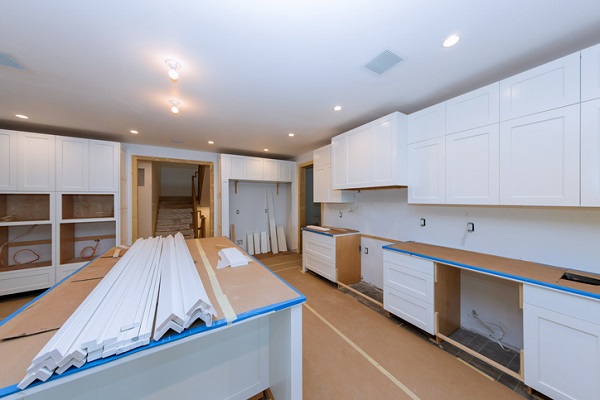How builders can capitalize on the home remodeling boom
It’s no secret that new-home demand has far outpaced new-home construction. This shortage of affordable new homes has been a leading factor in the home remodeling boom. In fact, according to the Joint Center for Housing Studies, the home remodeling market has grown over 50% since the Great Recession. Today, we’ll see why this boom matters to builders, which best practices can help builders succeed, and what some of the challenges are.
Why is remodeling so popular?
The biggest reason for the home remodeling boom is the lack of new construction. However, it’s not the only reason. Rising home equity; investments in accessibility, energy efficiency, smart-home features, and sustainability; and the popularity of home improvement shows like Fixer Upper and Property Brothers have all contributed to the boom.
Why does this boom matter to builders? As of 2017, the most recent year examined by the Joint Center for Housing Studies, the home remodeling market was worth nearly $425 billion! That means loads of potential for builders willing to contribute to the remodeling market. Let’s look at some of the best practices that Walt Keaveny—Risk Manager and Principal Engineer with 2-10 Home Buyers Warranty (2-10 HBW)—recommends.
Remodeling best practices for builders
According to Keaveny, builders should focus on two best practices in particular in remodeling.
- Agree on a detailed and written scope of work during the contract phase
- Clearly identify what makes them different from the competition
Having a detailed and written scope of work is crucial to home remodeling success. The more you can educate homeowners about the scope of work, the more likely they are to buy. Also, it’s important to provide written performance standards that establish how workmanship, systems, and structural work will perform after you’ve completed the work. Performance standards help avoid disputes, such as when homeowners are unhappy about how wood floors, framing, and trim naturally adjust to humidity; how concrete, mortar, grout, and caulk shrink as they dry; how drainage grades change as fill settles, and so on.
The next best practice is to clearly show homeowners what sets you apart from the competition. Consider discussing the quality of your work, value of experience, aggressive schedule, and any third-party validation you can provide. Show photos and provide references. Assure homeowners that you will be available long after you complete the project. Don’t fall into the trap of letting low price be the main deciding factor.
Overcoming home remodeling challenges
Though there’s a ton of opportunity in the home remodeling space, there are several challenges as well. Two of the biggest challenges you may need to overcome are:
- Negative perceptions from homeowners.
- Poorly set expectations.
How can remodeling contractors benefit from this massive market, set themselves apart from competitors, and overcome these challenges?
The biggest challenge is that many homeowners enter the contractor selection process with a negative perception, low expectations, and a low level of trust. They often feel that contractors are out to take advantage of them. Fly-by-night and sham contractors hurt the overall industry, as they are the ones often profiled on the evening news. So, with such a negative attitude going into the process, homeowners tend to treat contractors like a commodity and focus solely on price.
To overcome this issue, you’ll need to prove your worth from the start. Most remodeling contractors are professionals who take exceptional pride in their work, striving for customer satisfaction and referrals. You can lean into your positive reputation, provide proof of third-party validation, and set expectations properly.
Poorly set expectations are the second big challenge, one that you can solve with a written document. Even with good and honest intentions, homeowner disputes often occur because the builder didn’t clearly identify the scope of work and performance standards in writing. Thus, the homeowner’s expectations do not meet the contractor’s planned deliverable.
Can a remodel warranty help builders?
Yes, in some cases, a home remodeling warranty can be helpful to builders. The popularity of insurance-backed remodel warranties has been growing since they were widely introduced in recent years. According to Keaveny, remodel warranties are relatively inexpensive, with costs typically ranging from $200 to $300 for projects valued at less than $100,000.
Remodel warranties have some similarities to new-home warranties. They can provide important protections to the homeowner and remodeler. They may provide written performance standards that can override implied warranties.
Conclusion
The remodeling industry is experiencing rapid growth at record levels, and remodeling contractors are positioning themselves to capitalize on the vast opportunities. The remodeling industry does have some challenges with public perception, but successful contractors know how to address the issue and differentiate themselves. The key is to educate homeowners by providing a detailed scope of work, selling key advantages, and standing behind your work and reputation.
Learn how you can protect your business and add valuable selling points to your new builds with a 2-10 HBW structural warranty.
Special thanks to Walt Keaveny, whose expertise inspired this article.








